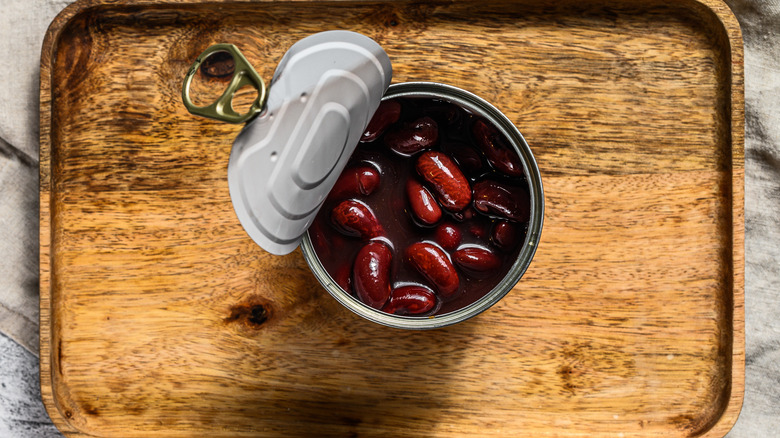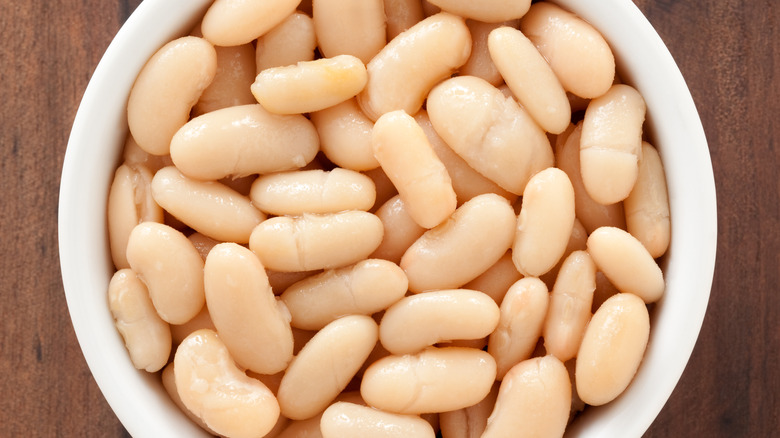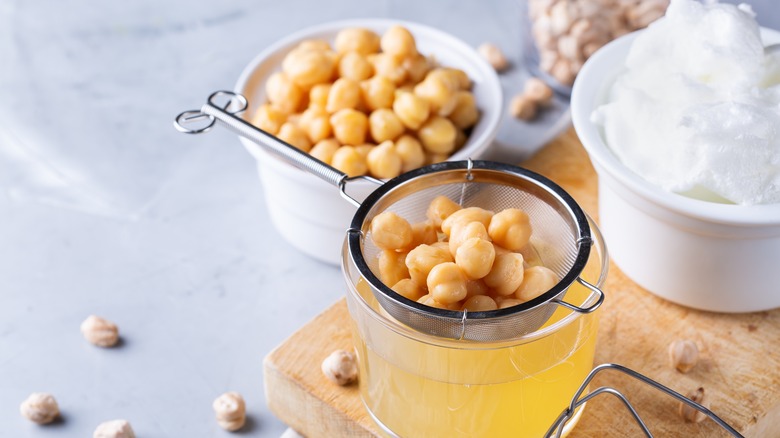Do You Need To Cook Canned Beans Before Eating?
It only takes a few simple ingredients to turn canned beans from boring to brilliant. These humble legumes are a lifesaver on busy nights when you don't have time to spend hours making dinner. And part of the reason why is that you don't need to cook canned beans before you eat them.
Dried beans are usually soaked (but don't always have to be) and then simmered in hot water over the course of hours in order to rehydrate them, but canned beans are already cooked before they get sealed and packaged. This means that you can immediately rinse them and eat them out of the can — just be sure to opt for a low sodium variety and rinse them thoroughly to avoid excess saltiness, if you won't be cooking them a second time.
From there, you can throw canned beans in a food processor to make hummus or other dips, use them to top a salad, drizzle them with olive oil and flaky salt over griddled sourdough, or pop them into tacos with salsa and cilantro. These kinds of "raw" applications can really benefit from beans right out of the can. Canned beans tend to have a softer texture than dried beans, so if you're not adding them to a stew or casserole, eating them without cooking them a second time is a great way to prevent a mushy texture in your favorite recipes.
How canned beans are made
After beans grow to full maturity, they're dried and then sent to processing facilities to be cooked and canned. The beans are first soaked, then flash cooked in a very short process called "scalding." After being drained, possibly skinned, and sterilized, they are packaged into cans along with salted water, which helps to preserve their freshness. Over time, the beans release their starches back into the water, which is how you get that thick, viscous liquid that comes in most cans.
Beans are also cooked before canning to prevent them from expanding in their cans, which can cause issues with capacity and might even make the container burst. The cooking process also ensures they don't fall into the "danger zone," as the FDA warns that foods resting between 40 and 140 degrees Fahrenheit are more likely to be contaminated with bacteria. Exposure to high temperatures via scalding ensures that bacteria is killed off. Beans can last for years in unopened cans, though once opened, they will last for about three to four days in the fridge.
Can you eat the liquid inside a can of beans?
Now you know that you can eat canned beans without cooking them, but did you know that you can eat the liquid they come in, too? While many choose to rinse this slippery substance off (it can certainly look unappetizing), a couple tablespoons of the canning liquid can be used to thicken soups. The plentiful starches from the beans make it work almost like flour or cornstarch.
The big upside is that you can use bean liquid without noticing any difference flavor-wise. One thing you might want to consider, though, is that the canning liquid can be quite salty. You'll want to cut down on the salt in your recipe or choose low-sodium beans.
The most versatile bean liquid, due to its mild flavor, comes from chickpeas. Known as aquafaba, the canning liquid is commonly used as a vegan replacement for egg whites, and as an emulsifier for recipes like vegan mayonnaise. You can also whip it into a meringue, or use it in mousses or cakes. Unlike eggs, aquafaba is completely safe to consume raw, so some home bartenders like to use it as a substitute in frothy egg white cocktails. Again, consider buying a low-sodium can of chickpeas if you plan to use it in sweet applications.



